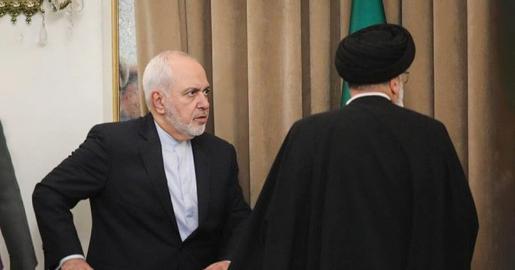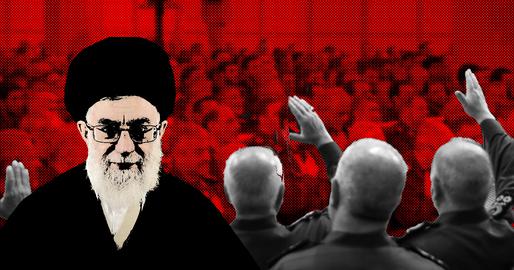Among the many presidents, prime ministers and foreign dignitaries attending the August 5 inauguration for Hassan Rouhani's second term as Iranian president was North Korea’s Kim Yong-nam, who holds the title President of the Presidium of the Supreme People’s Assembly of North Korea.
Iran and North Korea have now been allies for four decades. So is there a special relationship between Iran and North Korea, arguably the world's most closed country? And what's behind it?
1. North Korea’s “Great Leader” courted Iran’s “Supreme Leader” in 1979.
Kim Il Sung first reached out to Iran’s Supreme Leader, Ruhollah Khomeini, in May 1979, sending him a congratulatory telegram on the victory of the Islamic Revolution. On June 25, Khomeini met with ambassador Chabeong Ouk in Qom on what Chabeong called “the 29th anniversary of the aggression of U.S. troops against the meek nation of Korea”—i.e. the Korean War. Khomeini replied by calling for the expulsion of American troops from South Korea. The countries both built ideologies around their grievances against the United States, but Iran also worked hard to foster relations with “non-hostile” countries.
2. North Korea armed Iran during the Iran-Iraq War.
During early years of the Iran-Iraq War, North Korea— its official name is the Democratic People’s Republic of Korea (DPRK)— helped to meet Iran’s military needs in exchange for cash and oil. Khomeini’s regime was desperate for military equipment and ammunition. Speedy arrival of urgently needed weapons from North Korea—which enjoyed good relations with big arms manufacturers like China and the Soviet Union—boosted the morale of Iran’s post-revolutionary forces. During the “War of the Cities” between Iran and Iraq, North Korea also began providing Iran SCUD missiles.
3. While working as a propagandist and censor, current President Hassan Rouhani met North Korean broadcasters.
In 1980, while enforcing “Islamic criteria” as a member of the supervisory council of Islamic Republic of Iran Broadcasting, Rouhani met counterparts from North Korea’s Radio and Television Broadcasting Committee during a trip to Pyongyang. He also met Kim Il Sung. Rouhani was also tasked with pursuing arms in North Korea.
4. Ali Khamenei’s 1989 trip to North Korea may have helped make him Supreme Leader.
In 1989, Iran’s then-President Ali Khamenei visited North Korea. According to Khamenei’s official biography, the visit helped secure him his position as supreme leader. "When Ayatollah Khamenei was visiting North Korea,” Ruhollah Khomeini’s son Ahmad recalled, “the late Imam watched the TV reports including a large number of people who gathered to welcome him, as well as his marvelous [sic] speeches and debates. Then he said that Ayatollah Khamenei really deserves to be a leader."
5. Iran and North Korea dedicated “friendship farms” to each other.
Although bilateral visits dropped off after Kim Il Sung’s death, cultural links continued in the form of the Iran-Korea Friendship Association, which Mohsen Rafiq-Doust, head of the state-owned Mostazafan (The Oppressed) Foundation, helped establish in 1995. In 1996 Iran and North Korea inaugurated friendship farms. Iran designated the Magsal Agricultural and Animal Husbandry Farm in Qazvin province the “Iran-DPRK Friendship Farm,” while North Korea established the “DPRK-Iran Friendship Ripsok Cooperative Farm”‘ in Mundok County, South Pyongan Province. Each year, the farms hold cultural exchanges, commemorations of Khamenei’s visit to North Korea, and commemorations of Kim Il-Sung and Kim Jong-Il.
6. Not all Iranian officials like North Korea
In 2006, Mohsen Rezaei, Secretary of the Expediency Council and former chief of the Iranian Revolutionary Guard Corps—who had led an official delegation to Pyongyang in 1993—described North Korea’s example as one to be avoided. For Rezaei and other critics, North Korea had fallen behind in terms of development and had become reactionary, two traits they believed Iran should definitely not adopt.
Although North Korea has supported Iran’s “right to peaceful nuclear technology,” Gholam Ali Khoshroo, former Iranian Deputy Foreign Minister for International Affairs, challenged comparisons between the two countries’ nuclear programs in 2010: “North Korea has withdrawn from the Nuclear Non-Proliferation Treaty. It does not follow it and does not wish to return to it [and] it has even produced nuclear bombs...North Korea has been threatening other countries, but in the past few years we have been witnessing Iran as a target of threats made by other countries.”
7. Iran built the first mosque in North Korea.
In 2013, satellite images showed that Iran maintains a seven-building embassy compound in Pyongyang, at the center of which stands the first mosque in North Korea–one of only five places of religious worship in the country’s capital. The most remarkable detail in the photo is perhaps not the mosque, but the size of the compound.
8. There are persistent rumors that Iran and North Korea share military technology.
The United States wants to learn whether Iran has benefited from North Korea’s longer-range missile testing. There have been persistent rumors about North Korea hosting Iranian technicians, scientists, and military officials at ballistic missile tests, and vice versa. Jon Wolfsthal of the James Martin Center for Non-Proliferation Studies, who served as special advisor on nuclear security to Vice President Joseph Biden, says the United States would also like to know if North Korea—which has tested nuclear weapons—has shared information about building a nuclear device with Iran, or if Iran is helping North Korea to perfect its uranium enrichment program, since North Korean engineers are less skilled than Iranian ones.
9. Americans like North Korea even less than they like Iran.
In his 2002 State of the Union speech, U.S. President George W. Bush accused Iran and North Korea, along with Iraq, of pursuing weapons of mass destruction, mistreating their populations, and threatening world peace as members of an “axis of evil.” But while Bush’s characterization may have caused Iran and North Korea to overlap to some extent in American imaginations, Americans now see North Korea less favorably. This February, the polling company Gallup reported that Americans viewed North Korea the least favorably of all countries named in its 2014 World Affairs poll. North Korea has usurped the bottom place Iran occupied from 2004.
10. Iran improves its reputation on the world stage at North Korea’s expense.
Although there has been extensive cooperation between Iran and North Korea, they are not strictly allies. Iran has a substantial middle class and a sophisticated infrastructure—and, not least because of economic concerns, takes stock of what the world is saying about it. “North Korea is a totalitarian state that lets its citizens starve,” says Alireza Nader of the Rand Corporation. While North Korea is likely to maintain close links with Iran’s Revolutionary Guards, North Korea has little to offer the Rouhani government, which now wants to improve Iran’s economy and international standing. “Rouhani is focused on improving relations with regional Arab states and European countries and potentially the United States, but also other Asian countries like China, Japan, India and South Korea. North Korea is at the bottom of that list,” says Nader.
Sources:
Steven Ditto of the Washington Institute for Near East Policy.
Joseph Bermudez Jr., analyst. He has has lectured U.S. Army and Naval intelligence staff on North Korean defense.
Dilip Hiro, author of The Longest War: The Iran-Iraq Military Conflict
Bruce Bechtol, U.S. intelligence officer and author of Red Rogue
Alireza Nader, the Rand Corporation.
This article is an edited version of “Isolation Makes Strange Bedfellows”: Iran and North Korea and was originally published in August 2014.
visit the accountability section
In this section of Iran Wire, you can contact the officials and launch your campaign for various problems


























comments